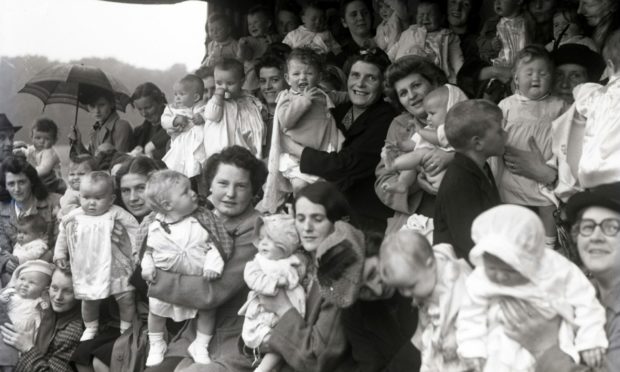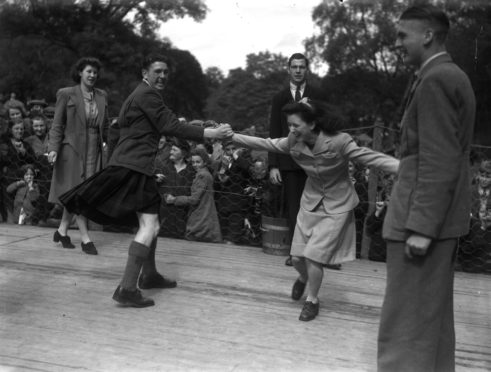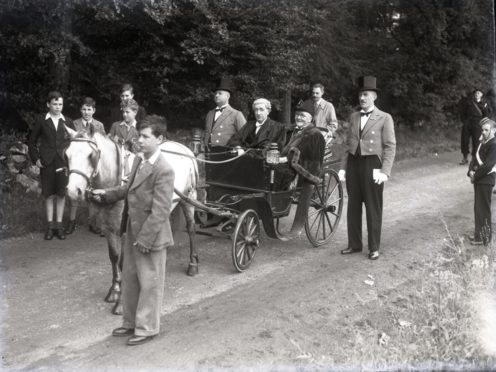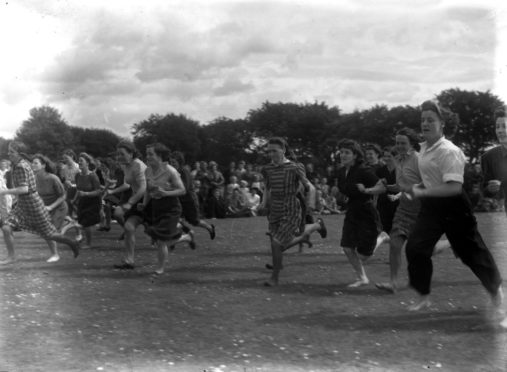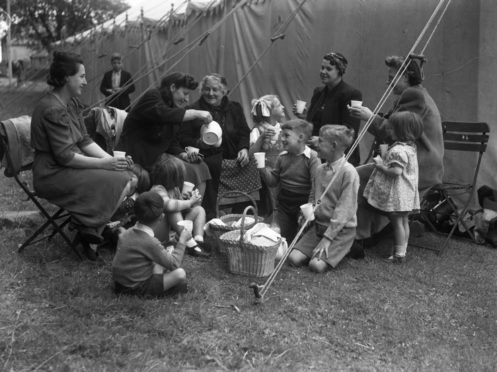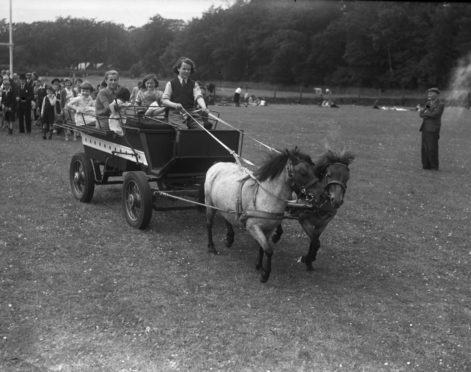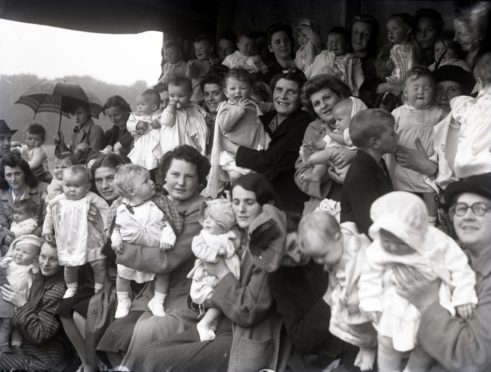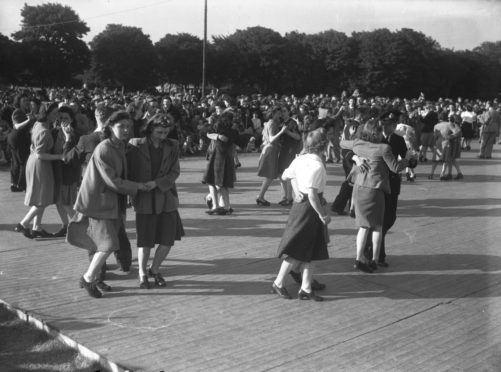Many of us will have enjoyed a ‘stay-at-home holiday’ this year due to ongoing Covid-19 guidelines.
Whether swapping the sunnier climes of the Costa del Sol for bracing seaside stays in Scotland, or enjoying day trips nearby, most people have heeded the advice to stay local.
But it’s not the first time everyone has sacrificed their usual summer getaways under government orders.
For several years during the Second World War people were encouraged to holiday, not just within Scotland, but within their own home towns.
Holidays abroad were the preserve of the privileged few in the 1940s, but railways would get clogged up with crowds travelling to resorts in Blighty.
In 1942, under orders of the Home Office, the Scottish Home Department said: “It is essential that every effort should be made to increase the amenities for recreation from June to September in or close to the towns of workers and their families.”
Following the announcement, an article in the Press and Journal read: “We are asked this year to spend our holidays at home.
“At first sight this may appear little short of dreadful. But need it be?”
To combat the gloom, councils across Scotland were tasked with providing fun programmes of events and activities to boost morale and most importantly, keep people at home.
The events were designed to stir up the ‘Blitz spirit’, save vital space on trains and transport for troops – and detract from the horrors in Europe.
And Aberdeen Town Council’s Links and Parks Committee quickly got to work devising “sporting events, competitions and entertainments” for the summer of ’42.
Launching in July, golfing, bowling and tennis events were staged at corporation courses, greens and courts.
Athletics were held at the Links Stadium, and Hazlehead Park was the setting for open air dancing.
The Justice Mill Lane (Bon Accord) Baths was the venue for a series of swimming events, including the most successful gala ever held at the pool.
Crowds were entertained by Petty Officer Hodges of the Royal Navy who had held the British amateur springboard champion title since 1936.
The event proved so popular, that “hundreds were turned away and every available spot around the baths was crowded with spectators”.
During the Hazlehead Park entertainments, ‘continental refugees’ put on displays of their folk dancing in traditional costumes.
The refugees were from Austria and Germany, and had fled to Britain to escape Nazi oppression.
The performance was tinged with sadness as a city councillor told the crowds: “While you are enjoying yourselves, don’t forget the background suffering in the occupied countries.”
Some of the refugees’ songs and drama portrayed their fight against fascism.
And a bit further down the road, a programme at Duthie Park featured excerpts from Shakespeare performed by pupils of Ruthrieston Junior Secondary School.
But for those who preferred quieter pursuits, for the first time the City Library took books to Duthie, Hazlehead and Victoria parks creating ‘pop up libraries’ for people to peruse.
And at Harlaw, the Home Guard put on a military display to entertain the masses.
They say an army marches on its stomach, and to ensure the hundreds of ‘holidaying’ Aberdonians didn’t go hungry, the innovative Women’s Voluntary Service built their own oven at Hazlehead Park to add to the catering services already on offer.
Communal canteens had the capacity to serve two-course lunches to up to 800 people a day, in addition to other refreshments.
And in the evenings, there was entertainment indoors – His Majesty’s Theatre staged a number of jolly shows to take people’s minds off the war.
For one week in July 1942, the twice nightly ‘stay-at-home holiday variety programme’ featured ‘international showman conductor’ Al Podesta and his band, and ‘magician of the moment’ Ronnie N’Gai.
The following week, Aberdonians were treated to a visit from famous comedy actor Ralph Lynn in the well-known Aldwych Farce Rookery Nook.
Meanwhile, the Capitol cinema’s ‘grand holiday programme’ featured upbeat films such as ‘Born to Sing’ and Mickey Mouse for the little ones.
Five-a-side football games were also held at the Links Stadium, and the Newcastle United football team paid a visit to Pittodrie to entertain football fans.
By 1944, Aberdonians were well-versed in their home holidays.
And it was all eyes on beautiful babies at “Aberdeen’s most popular holiday retreat” Hazlehead Park for a bonnie baby contest in 1944.
Unlike previous years the weather was a little wet for the judging, but rain didn’t spoil the fun.
And a popular addition to the autumn programme of 1944 was sheepdog trials, where flocks of sheep were brought to the city for the entertainment of toonsers.
A previous display in July attracted such large crowds that the sheep were brought back again for the autumn break so that people could enjoy “renewing acquaintance” with their favourite dogs.
Meanwhile, “valuable prizes” were promised for every event in the picnic sports programme.
There was something for everyone, with boxing, toddlers’ races, three-legged races, piping and Highland dancing competitions, as well as traditional track and field.
Drawing another parallel between the last 12 months and the hard times 80 years ago, come Christmas-time, Aberdonians were once again urged to stay local.
They were asked to have Christmas at home and avoid travelling by rail to visit family for festivities.
Brighter times were ahead in 1945 when Victory in Europe was declared in May, and many of the oppressive restrictions were lifted.
But for many, the holidays at home – although not exotic – provided welcome relief from tragedy and loss.
And they brought Aberdonians together to appreciate the good times on their own doorsteps.
See more like this:
